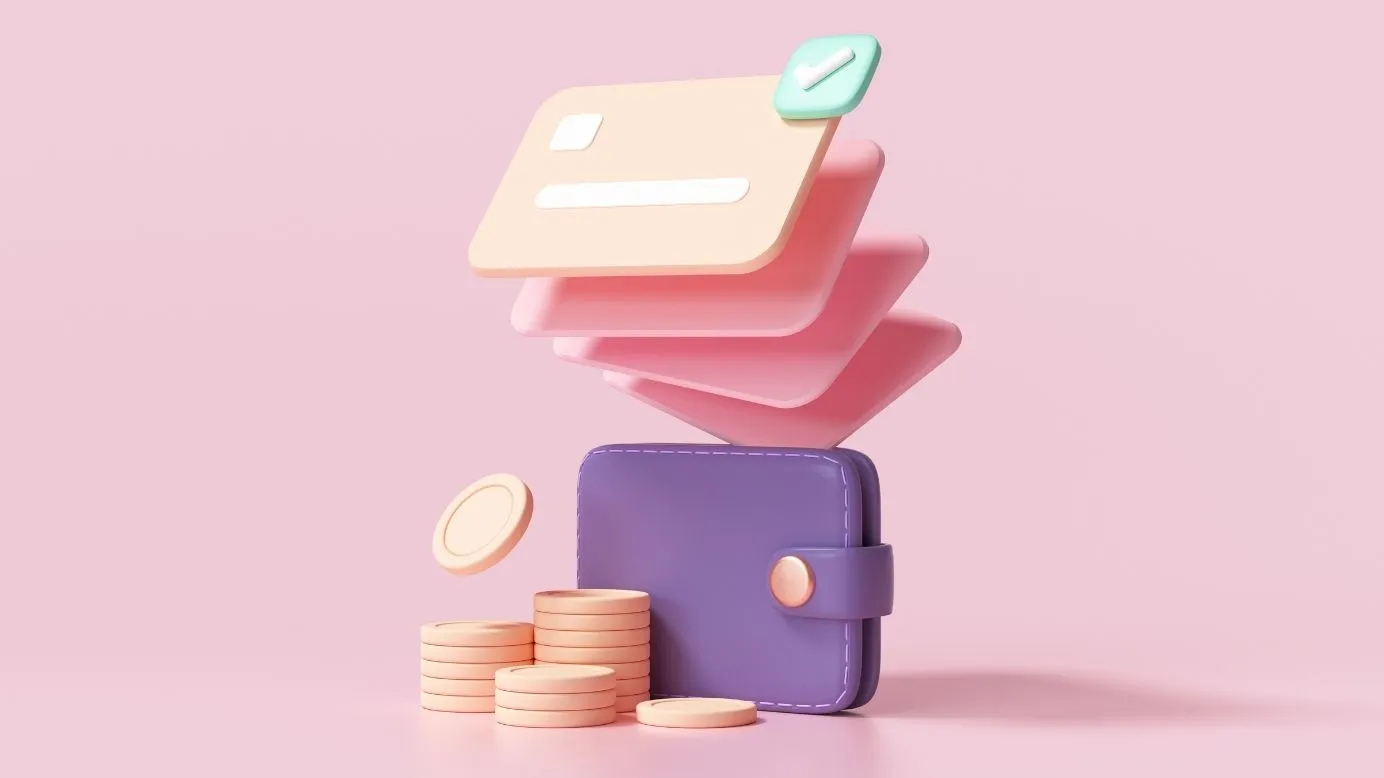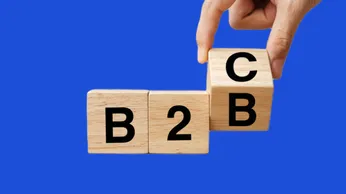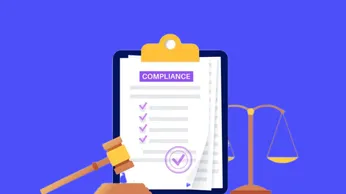On this page
‘CUSTO-MORE’ IS ALWAYS RIGHT.
That shot of happiness that courses through your veins every time you tuck into a cup of Starbucks? It could be more than just caffeine. After all, the ‘rewards’ you pick up with every sip can produce an equally heady feeling. That nearly 50% of mobile users who use restaurant loyalty apps use Starbucks Rewards (the name of its customer rewards program) is proof.
Starbucks doesn’t just stop there, of course. Members of their Loyalty Program get free games and music all year (the kind they dig!). They can hoard rewards and redeem them whenever they want. They can also share or gift their points to love ones. And the breezy app? It’s just a joy to use.
American Express also rewards ‘sticky’ users of its cards generously, going an extra mile by creating an exclusive community for members. Air Miles, on its part, makes its loyal patrons smile by partnering with popular brands and offering reward points that can be redeemed across partner stores.
What’s common here? Each of the above is a carefully put together strategy that honours attachment, respects individuality and delights innovatively. In other words, each of the above is an example of what the trade calls a ‘Customer Incentive Program’.
Here are a few figures why not just customers, but businesses too, can’t have enough of them.
- Consumers increasingly expect unique and personalized loyalty experiences. Deloitte's research indicates that tailoring loyalty programs to individual preferences enhances customer engagement and satisfaction.
- According to EY's 2024 Loyalty Market Study, well-structured loyalty programs are critical business strategies that drive customer retention and growth. The study found that 58% of consumers reported increased spending due to effective loyalty initiatives.
- Harvard Business Review highlights that building trust is crucial for maintaining customer loyalty, especially during economic uncertainties. Transparent and customer-centric practices help brands retain loyal customers even in challenging times.
What are Customer incentives?
Simply put, customer incentives are rewards given out to the ‘customers of a business’ for brand-building purposes. It is an effective way to build customer loyalty and increase sales. Customer incentives can include reward points, cashback, store credits, branded sway, gift cards, bonuses with free purchases, etc.
While completed purchases are an essential part of these, businesses also give out incentives to customers for many other simple activities like:
- Writing testimonials
- Making repeat purchases
- Upgrading their subscription plan
- Referring to other potential customers
- Creating user-generated content for social media
But it turns out that merely doling out points for completed purchases is not enough for customer incentives. Instead, you need to have a systematic incentive structure that maximizes the draw for customers while giving you the most benefits at an optimum cost. Well-designed customer incentive programs can do exactly that.
The reward needs to be something that your users are actively motivated by and should ideally tie back to the brand itself in the form of discounts, gift coupons, freebies, and so on.
Choosing a personalized and relevant reward is essential, as this will be what interests the customer enough to consider joining the incentive program in the first place. Customer incentive programs thrive when personalization meets value
At the same time, you need to get other elements right, such as demonstrating how your customers can save money through the incentive program, showing that you genuinely care about them, and making it easy for them to access or use the program.
Adding to that thought, here is a quick guide to designing the perfect customer incentive program for your brand.
Nothing feels more ‘right’ than gaining more and more (and more) customers, right? Well, a well-planned customer incentive program can help you achieve precisely that!
But before diving into the benefits, let’s explore why well-executed customer incentive programs make a real difference.
Why are customer incentive programs important?
Having a system of incentives in place for customer has many advantages. They will be more likely to keep coming back to you and recommend your brand to other people.
Here are some key benefits that you will reap when you launch and promote your consumer promotion and incentive program.
1. Customer satisfaction
When you give incentives to your customers through planned customer incentive programs, you show them that you value them for choosing to buy from you. This will help them feel good about their decision and keep them returning and buying your products or utilizing your services.
An important aspect worth considering is to target the right customers with your customer incentive rewards.
2. Data collection
Customer incentive programs can also act as powerful data-gathering tool. When customer sign up for an incentive program, they give you the data that you can use to target them in a tailored fashion and amass critical data insights about your customer base.
Running incentives offer an easy way to persuade users to willingly share details like their email address or their phone number, things they might not otherwise want to disclose.
Let’s take the example of a supermarket chain that offers loyalty cards to track purchases linked to individual shoppers. If they asked for this information, even the most loyal shoppers would be apprehensive of having their purchases tracked and recorded. Instead, by compensating customers with discounts for using loyalty cards, the store creates an incentive that boosts customer satisfaction while supplying fresh insights into customer behavior.
3. Customer retention
It is no secret that acquiring new customers is far more expensive than retaining existing ones. By providing the right incentive for customers, you can keep them hooked on your brand for the long run.
Keep your customers engaged through enticing rewards for more purchases with your brand. And the more you leverage the customer data you collect; the more relevant your rewards can be, thereby improving customer retention.
A digital incentive platform like Plum can fetch insights about your customers, enabling you to curate your catalog. With this data, you can customize rewards, thereby engaging your target audience effectively.
4. Charity focus
Customers want to feel like their actions are making a difference. In response, many brands offer incentive programs that let their customers donate their accumulated reward value to a charity of their choice.
This helps the consumer feel good, enables the brand to give back to society, and establishes a reputation as a community-minded company.
Let’s assume you run a retail store. You could announce that a small percentage of your monthly profits will be donated to a particular charity. This becomes a win-win for all. The charity will receive a sizable donation.
Customers will feel they’ve helped their community for a cause. And your store will make enough money to cover the donations as well as earn a tidy profit. In this way, customer incentive programs become a triple win—for the customer, the cause, and your brand.
Consumer Incentive Program vs. Consumer Loyalty Program
The words ‘loyalty’ and ‘incentive’ are often used interchangeably. However, an incentive program is not quite the same thing as a loyalty program.
A customer loyalty program is designed to reward existing users for their transactions and give them a compelling reason not to switch to competing brands.
On the other hand, consumer incentive programs focus on delivering sales growth when your customer achieves a target by rewarding them.
Such programs include gift cards and coupons, just like loyalty programs. Still, they may also offer more valuable rewards like merchandise or travel vouchers to further appeal to buyers and win their emotional attachment.
Another difference is that loyalty programs reward consumers for every transaction. On the other hand, incentive programs only deliver the reward once a specific target (such as a certain number of purchases) has been met.
Depending on your goals and the kind of engagement you would like to see with your customers, you can choose to have one or both for your brand.
How to build a customer incentive program
Well-crafted customer incentive programs can do more than just drive sales—it can shape customer behavior, build loyalty, and increase lifetime value. But to get it right, you need a thoughtful approach that balances your goals, your audience, and your budget. Here's how to build one that works:
Set your goals upfront
While getting a short time spike in sales and revenue is the most obvious and common reason why organizations opt for a customer incentive program (and there’s nothing wrong with that), stopping there would be lazy. That’s because taking a deep dive - data and analytics in tow – can help you identify gaps and weak links in your AIDA chain, CRM journey and buyer funnel. You can then take the necessary corrective steps and actions to make your customer incentive program truly efficient and impactful. Undertaking this exercise will also make it easy to figure out the real KPIs and goals you must focus on for your customer incentive exercise - be it…
- Acquiring buyer data
- Getting feedback for a trial or launch
- Boosting online PR and goodwill (via reviews and UGC)
- Getting folks to ‘opt-in’ for your newsletter or mailers
- Hike up sales.
Figure out the reason your business needs a customer incentive program
It is tempting to rationalize your customer incentive program with the logic that it will boost sales and bring in revenue. Who could argue with that, right? Well, at least one person from every functional area and department should. That’s because the very need for a customer incentive program can often (though not always) conceal deep-seated cracks within the organization.
Are you losing customers to rivals? Why are long time buyers suddenly behaving strangely? Could there be bottlenecks in processes and systems? Are Sales folks demotivated? Is the strategy missing a vital point or two? Is the leadership disengaged? A customer incentive program – apart from making the cash registers jingle – offers a great opportunity to diagnose and decode what’s amiss along your AIDA funnel, and reset the fundamentals.
Target the right people
Dive into customer data to understand their preferences, habits, and motivations. Understanding what motivates them is key to designing impactful customer incentive programs. This will help you design rewards that truly resonate and keep them coming back.
A customer incentive program that means everything to everyone doesn’t usually mean a lot for business. That’s because it spreads itself too thin to have a meaningful connection with a specific group of people or anyone particular demographic.
In the process, you miss out on the opportunity of getting the best bang out of the buck, time, effort and manpower you invest. Do you want to bring your once-loyal customers to return? Are you looking to tap new markets and audiences?
Does targeting only VIP and HNI (High Net Worth) clients make the most sense to your current business situation? Figuring out WHAT you want to achieve will make your program easier to implement, efficient and productive.
Dive into customer data to understand their preferences, habits, and motivations. Understanding what motivates them is key to designing impactful customer incentive programs. This will help you design rewards that truly resonate and keep them coming back.
Design incentives that truly connect with your audience
In a world full of marketing noise, your incentive needs more than just a flashy label—it needs to spark genuine interest. Whether it’s discounts, freebies, cashback, gift card or exclusive experiences, keep your rewards simple, desirable, and easy to redeem.
That’s where smart reward design comes in. A thoughtful reward strategy can elevate your entire customer incentive program and drive better results. Here are five pillars of impactful reward design:
- Desirability: Choose rewards that feel aspirational and relevant. Incentives should feature on your audience’s wish list, not end up forgotten in their inbox.
- Customization: Personalize rewards based on user personas or behavior. The same reward won’t appeal equally to college students and senior executives—context matters.
- Speed: Avoid delays. Instant gratification is key to maintaining excitement. If possible, offer rewards immediately after the desired action is completed.
- Convenience: Streamline the redemption process using technology. Digital rewards, integration with your CRM or feedback tools, and mobile access make participation effortless.
- Choice: Give users the freedom to choose from a variety of reward types. Platforms like Plum offer vast global catalogs covering everything from gift cards to experiences—helping you meet diverse preferences at scale.
When done right, reward design becomes the reason people engage with your brand, again and again.
Define your budget
Understand how much you can spend per customer while remaining profitable. A good program balances reward value with business impact. Before launching or scaling your rewards program, it’s essential to determine how much you can sustainably invest in each customer without compromising profitability.
Start by calculating your customer lifetime value (CLTV) and align your incentives accordingly. A well-balanced program ensures that the perceived value of rewards is high for the customer, while still delivering strong ROI for your business. Setting clear budget boundaries helps avoid overspending and keeps your loyalty strategy scalable and focused.
Deliver great support
Your customer support experience is a direct reflection of your brand—and it plays a crucial role in how your rewards program is perceived. Ensure your support team is well-trained, responsive, and knowledgeable about the program’s benefits, rules, and redemption process.
Fast, empathetic assistance can turn a minor issue into a loyalty-building moment. Seamless support not only builds trust but also enhances overall satisfaction and encourages continued participation in your CX or loyalty program.
Track and tweak over time
Even the best-designed loyalty programs require ongoing optimization. Continuously monitor performance through key metrics like engagement rate, redemption rate, repeat purchases, and churn.
Be open to iterating on rewards, rules, or communication tactics—but make sure any changes are transparently communicated to customers to maintain trust and engagement. A data-informed approach ensures your program stays relevant, effective, and aligned with evolving customer expectations.
Monitor KPIs aligned with your program goals. Be ready to make improvements—but always communicate changes clearly to your customers.
Customer incentive program ideas
Need an Incentive to Run a Customer Incentive Program? Here are 6! Let’s look at the various benefits a Customer Incentive Program can deliver for a business or brand, irrespective of niche, goal or growth stage.
1. Lifting both revenue and morale - By boosting sales
This is an obvious and straightforward one. Barring exceptions like essential goods and services that don’t have a comparable substitute, incentivizing someone to buy your product will - in most cases – lead to a higher percentage of response than if you didn’t offer a reward.
Be it clearing inventory backlogs, pumping up sagging morale or taking your revenue to the next level, a boost in sales figures ticks a long list of boxes.
- Higher spending among members: Members of loyalty programs tend to spend more, with studies indicating that 58% of consumers increase their spending with brands that offer such programs.
-Influence on purchase decisions: A significant 70% of U.S. consumers are more likely to remain loyal to brands that offer loyalty programs or rewards.
2. Baking-in the 'return business' by building loyalty
The Pareto Principle states 80% of your profits come from just 20% of customers. Being appreciated for their patronage makes customers feel good and draws them closer to the brand, deepening the emotional connection they have with it.
The effects of loyalty are both exponential and non-linear, often benefitting your brand in unexpected ways. For one thing, loyal customers will stay with you through thick and thin, helping you outlast rough times.
They will, of course, keep bringing in repeat business. And finally, they will happily play the role of your company’s cheerleaders by spreading brand love on social channels, online groups and public forums – making you look good where it matters.
-According to Forrester's Consumer Benchmark Survey, 2024, a significant majority of US online adults are members of at least one retail loyalty program, with grocery, credit card, and pharmacy programs being the most popular.
- Deloitte’s 2024 Consumer Loyalty Survey finds that consumers crave personalized programs and are willing to share their data for more tailored experiences
3. Refining marketing initiative with better data
87% of Americans are willing to have various details of their activity tracked in exchange for more personalized rewards and brand experiences.
A customer incentive program is a great way to collect data about your customers. Buyers are far more open to sharing personal information when there’s a carrot at the end of the stick. In today’s age, data is the surest way to businesses’ Holy Grail of ‘Happy Customers’.
It gives you a better grip over the buying habits, lifestyle and preferences of your target demographics, and lets you continuously test, refine and optimize both your marketing campaigns and user experience.
Digital marketing guru Neil Patel chips in with this eye-opener:
A McKinsey study found that “executive teams that make extensive use of customer data analytics across all business decisions see a 126% profit improvement over companies that don’t.”
4. Touching them where it matters
Connecting with customers emotionally can lead to rich dividends for brands over both the short and long term. For companies they can relate to, buyers are willing to pay more, double up as vociferous brand ambassadors (saying good things about it to everyone and their neighbor), and stay loyal.
The irony is that most brands don’t quite ‘get it, and 68% of customers continue to leave because they feel the company doesn’t care about them. Customer incentive programs that have the vision and gumption to rise above the merely transactional can turn this table by leveraging brand traits and values-pillars to build meaningful relationships with their fans and patrons.
According to Forrester's 2024 US Customer Experience Index, customer experience quality in the U.S. has declined for the third consecutive year, reaching an all-time low. This decline has significant implications for customer loyalty, as a poor experience can drive customers away.
Personalization enhances loyalty program engagement
According to Deloitte's 2024 report on consumer loyalty expectations and preferences, personalized experiences and rewards have become increasingly important to consumers. This trend underscores the growing expectation for tailored interactions to foster customer loyalty.
5. Building positive PR buzz
“Your brand isn’t what you say it is - it’s what Google says it is”: Chris Anderson, Head of TED.
Reviews, ratings and user-generated feedback/content (UGC) ranks right up there when it comes to generating - or ‘fixing’ - an organization’s online reputation.
After all, your buyers trust what friends, peers and actual users have to say about your brand, considerably more than the messages your brand directly puts out (this may hurt, but denial-mode can be worse). Of course, this is a dicey territory, and reviews can go either way.
This is where customer incentive programs come in. Done right, they can tilt the balance in your favor and are a proven way to generate positive customer feedback, thus making a brand shine brighter in public.
-A 2024 study by Nielsen revealed that 84% of consumers trust peer recommendations more than any other form of advertising. This underscores the critical role of UGC in building consumer trust and influencing purchasing decisions.
-Approximately 4 in 10 U.S. respondents say they spend more time watching user-generated video content than they do TV shows and movies on video streaming services—a sentiment that increases to around 60% for Gen Zs and millennials.
6. Riding the referral wave
An expertly planned customer incentive program also ties in snugly to your referral marketing strategy – which is the practice of having happy customers recommend your brand to friends and acquaintances.
According to Nielsen's 2024 Annual Marketing Report, 92% of consumers trust recommendations from friends and family over all other forms of advertising, underscoring the significant impact of referrals on purchasing behavior.
Referrals happen to be an extremely High ROI marketing approach, for two reasons. One, the cost of new customer acquisition is nearly zero. Two, since the 'Referrer' is familiar with both your brand and the person s/he is referring to, both buying intent and chances of conversion are high. You will experience the benefits first-hand when you do customer incentivization right.
While the appeal of cash is universal, timeless and well documented (making it a safe choice of reward for customers and potential buyers), research confirms that non-monetary rewards can rank even higher for certain groups of people. The difference can sometimes be significant.
Trends also show that non-cash ‘benefits’ are cherished across age groups - and particularly by Millennials and Gen-Z. In other words, when that Mastercard ad on TV proclaims philosophically that there are some things money just can’t buy, it isn’t joking.
And what about that endless debate between cash incentives and the non-cash kind? Which one should you go for? Well, the decision will depend on your understanding of your target demographic persona. When in doubt, it’s best to go for a blend of both – and A/B test your campaign by trying different ratios and combinations. Read up more on cash vs non-cash incentives.
Key takeaways
Designing a successful customer incentive or loyalty program goes beyond offering points or perks. It’s about crafting meaningful experiences, using the right tools, and ensuring your efforts reach the right people in the right way. Here are three essential principles to help you build a program that’s not only effective but truly memorable.
1. Prioritize and focus
On your customer, not your competition. Remember, you are ultimately trying to build a relationship your customers will cherish, not win a race your patrons don’t care about. Keep their needs front & centre, make sure the rules of engagement are simple to understand, the reward at multiple levels, bake in the right blend of intrinsic and extrinsic motivation while designing your rewards stack and tweak the program as you go to accommodate shifts in your customers’ moods and tastes.
2. Get inventive with tech
Create easy, enriching and seamless moments for your customers with a great UX design – one that’s a pleasure to use and return to. Design ‘entry points’ and ‘onboarding bays’ at multiple touchpoints along the engagement journey, making it easy for them to join the program at any point of the loop.
3. Promote innovatively
Make sure your customer incentive program reaches the maximum number of relevant eyeballs. Start with a great name, build pre-event buzz with teaser messaging, set emailer reminders as launch day advances, reach out via one-on-one messaging and go multi-channel to engage customers on their favorite platforms.
Explore the possibility of co-branding and tie-ups with brands who share a similar cause and connect with your customers and stay top of mind with compelling storification.
Level up your customer incentive program with smart digital tools
In today’s hyper-competitive market, customer loyalty isn’t earned with guesswork—it’s built with precision, speed, and personalization. Manual processes slow you down, introduce errors, and waste time. If you're still relying on spreadsheets and scattered systems, it’s time to modernize.
Plum transforms how you run your customer incentive program.
It’s not just a rewards platform—it’s your engine for building consistent, memorable engagement at scale. Here’s how Plum helps you unlock the full potential of your program:
- Seamless integrations with your existing CRM, HRMS, PRM, survey, or engagement tools.
- Omnichannel delivery—send rewards via SMS, email, WhatsApp, on-screen popups, QR codes, or in-app notifications.
- Deep personalization and customization to tailor rewards to audience preferences.
- Instant, error-free reward automation cuts down manual effort and saves time.
- Real-time analytics and reporting gives you full visibility into usage, spend, ROI, and optimization opportunities.
Book your free demo with Plum and create incentive programs that customers remember and return for.















